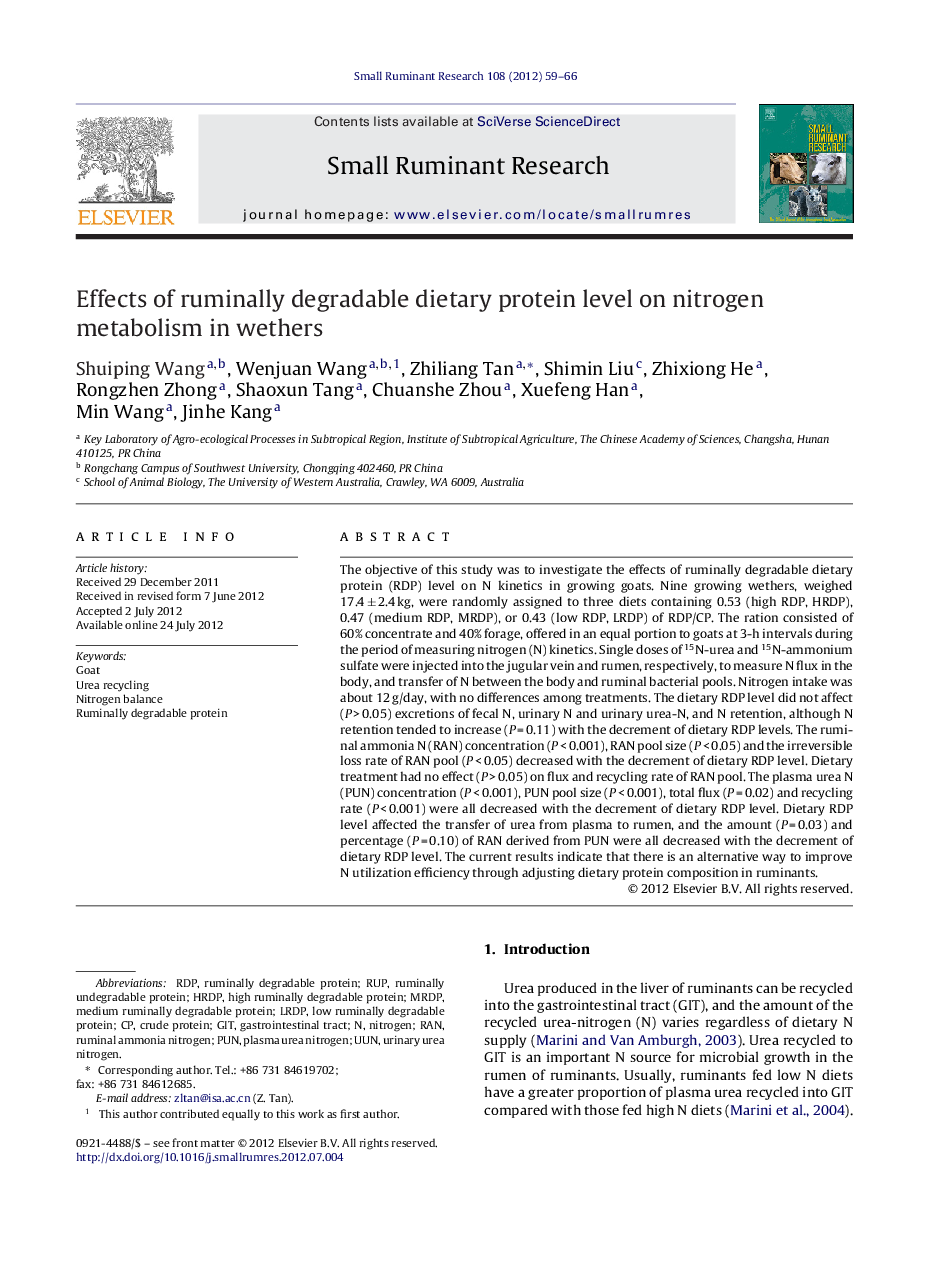| Article ID | Journal | Published Year | Pages | File Type |
|---|---|---|---|---|
| 5796234 | Small Ruminant Research | 2012 | 8 Pages |
The objective of this study was to investigate the effects of ruminally degradable dietary protein (RDP) level on N kinetics in growing goats. Nine growing wethers, weighed 17.4 ± 2.4 kg, were randomly assigned to three diets containing 0.53 (high RDP, HRDP), 0.47 (medium RDP, MRDP), or 0.43 (low RDP, LRDP) of RDP/CP. The ration consisted of 60% concentrate and 40% forage, offered in an equal portion to goats at 3-h intervals during the period of measuring nitrogen (N) kinetics. Single doses of 15N-urea and 15N-ammonium sulfate were injected into the jugular vein and rumen, respectively, to measure N flux in the body, and transfer of N between the body and ruminal bacterial pools. Nitrogen intake was about 12 g/day, with no differences among treatments. The dietary RDP level did not affect (P > 0.05) excretions of fecal N, urinary N and urinary urea-N, and N retention, although N retention tended to increase (P = 0.11) with the decrement of dietary RDP levels. The ruminal ammonia N (RAN) concentration (P < 0.001), RAN pool size (P < 0.05) and the irreversible loss rate of RAN pool (P < 0.05) decreased with the decrement of dietary RDP level. Dietary treatment had no effect (P > 0.05) on flux and recycling rate of RAN pool. The plasma urea N (PUN) concentration (P < 0.001), PUN pool size (P < 0.001), total flux (P = 0.02) and recycling rate (P < 0.001) were all decreased with the decrement of dietary RDP level. Dietary RDP level affected the transfer of urea from plasma to rumen, and the amount (P = 0.03) and percentage (P = 0.10) of RAN derived from PUN were all decreased with the decrement of dietary RDP level. The current results indicate that there is an alternative way to improve N utilization efficiency through adjusting dietary protein composition in ruminants.
